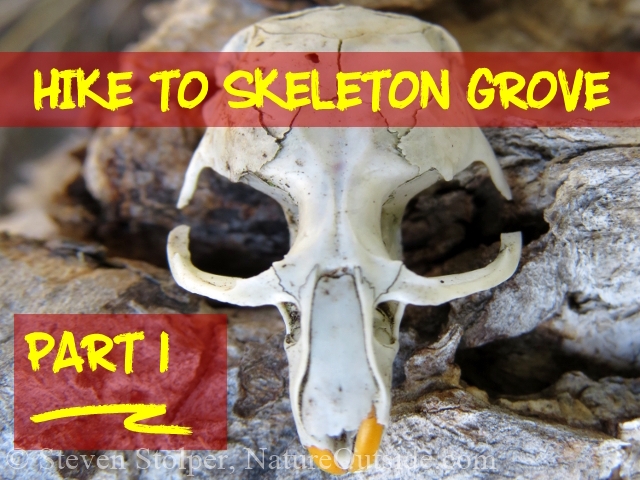
Do you fear death?
Many of us do.
I recently led a hike for the US Fish and Wildlife Service. We explored a coastal marsh to see the amazing birds and salt-adapted plants and animals. My group consisted mostly of older adults.
They were totally jazzed by the amazing birds and animal tracks we saw.
As is normal, we occasionally passed carcasses of deceased birds. Death is a normal occurrence in nature. If you walk in a land bountiful with animals, you will invariably find signs of death.
The group, so enthusiastic about seeing birds from afar, suddenly went silent. They stepped up their pace and barely looked at the corpses. Yet the same group chattered excitedly when we came upon fresh fox tracks.
To many of us, death is frightening. It’s unclean and taboo. Heck, an entire industry makes billions of dollars selling us virtual immortality.
I want to change your view of death. I want to show you that just as animal tracks teach us about nature, you can learn a tremendous amount from animal bones. Bones you find along the trail can enhance your understanding of the natural world. Let bones teach you.
This is the first of two articles about a hike I did with the Bay Area Trackers. We cross a coastal grassland to a stand of Monterey cypress that I call, “Skeleton Grove.”
The Land Surprises
“Whoo!”
I exhale as I open my car door. It’s 8:00 AM with a brilliant blue sky. But the constant sea breeze pushes the 60-degree temperature right through my thin fleece jacket. I can’t see the ocean to the west, but estimate it’s nearly a half-mile from my position.
Before me lies California coastal prairie. Grassland broken by the occasional Coyote brush (Baccharis pilularis). Some of the woody shrubs appear dead. Their wavy trunks emanate from a central point on the ground and terminate, leafless, like some wacky modern sculpture.
I was told this was going to be a hike like no other. And I should bring references on animal skulls and bird feathers. But so far, I’m unimpressed. At first glance the scrub doesn’t look like there’s much action going on.
I am so wrong!
To the north is a stand of Monterrey cypress trees (Cupressus macrocarpa). They’re a medium-sized coniferous evergreen native to the coast of California. These wind-whipped trees can grow to more than 100 feet. Their branches slope gently upward, holding dense bright green sprays of scaly leaves. Years of fierce winds batter these trees, giving them flat-tops and irregular shapes. They are uncommonly beautiful and sculptural.
If you’re a golfer, you may recognize the trees from the famous logo for the Pebble Beach Golf Course.
White Plastic Bags that Fly
I mention that I’m unimpressed. Maybe it’s the last of my “civilized” prejudices. The land looks unkempt and unruly. But that’s often how nature appears at first glance!
As I scan the field, white spots on all the bushes grab my attention. Each Coyote brush appears to have at least one white plastic shopping bag stuck in its upper branches. I blink. This doesn’t make sense. California banned the use of disposable plastic shopping bags. The reduction in litter has been enormous! And this area banned disposable bags in 2013.
Then I realize what I’m seeing…
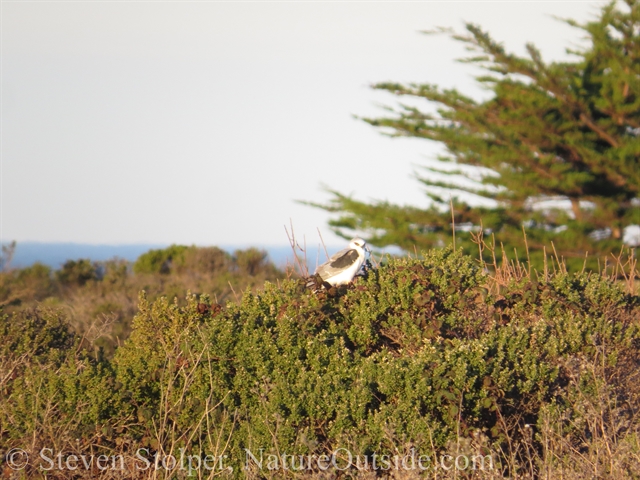
A White-tailed kite sits on a Coyote brush. Monterrey cypress is in the background to the right. The Pacific Ocean appears on the horizon.
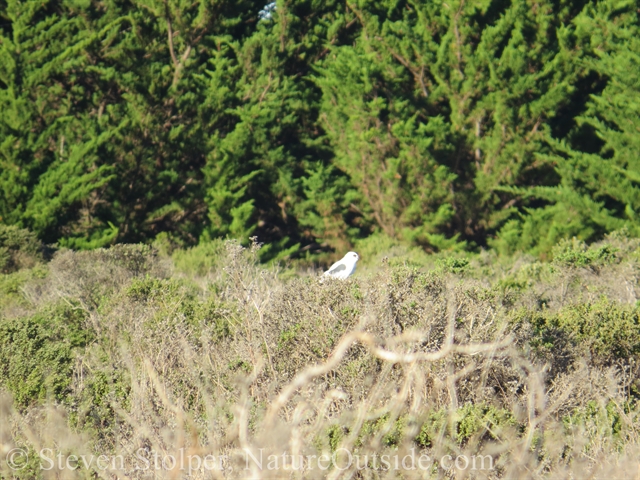
Another White-tailed kite with a Monterrey cypress forest in the background.
There’s a raptor on every bush! I count four White-tailed kites and two Northern harriers. Six raptors in the space of 500 feet!
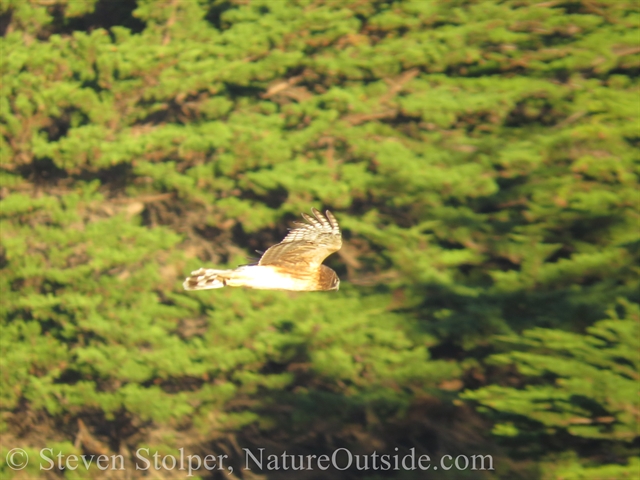
A Northern harrier in flight, looking for prey.
Ankle Twisters
The group arrives and we strike-out into the grassland.
Yikes! The ground is shockingly uneven. Every third step requires adjusting my balance. Fortunately, everyone in our group is wearing supportive hiking boots.
This is the work of subterranean creatures. I can see burrows in every direction. What could make them? Moles, voles, mice, ground squirrels?
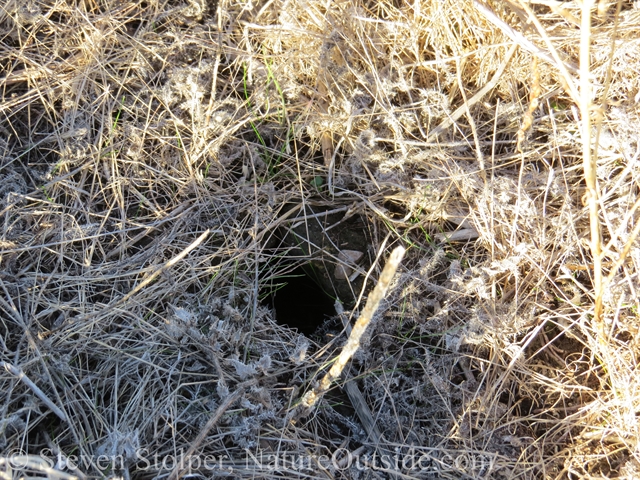
One of the many dens in the grassland. What made it?
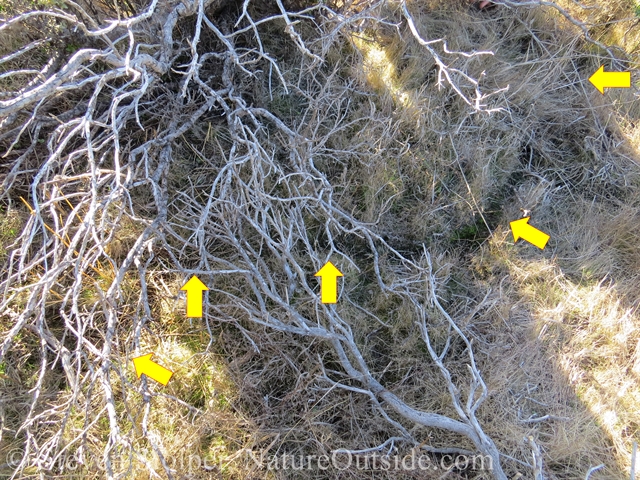
Looking closely, we see small animal runs everywhere. This run streams underneath a Coyote brush. Annotated in yellow.
Finally, a culprit is unmasked. It’s a California Meadow Vole (Microtus californicus). These rodents are ubiquitous throughout California. They are generally 6-7 inches long with a 2-inch tail. What seals the ID is its two-toned tail. It’s short tail, less than half its body length, has dramatically different colors on top and bottom.
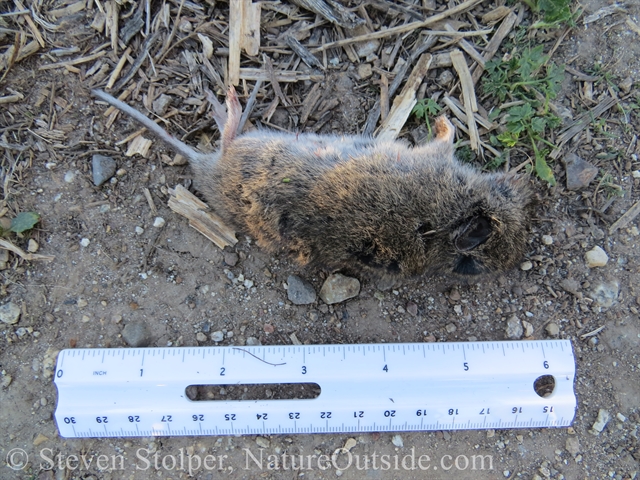
California meadow vole. We see what may be bite marks on the back of its neck.
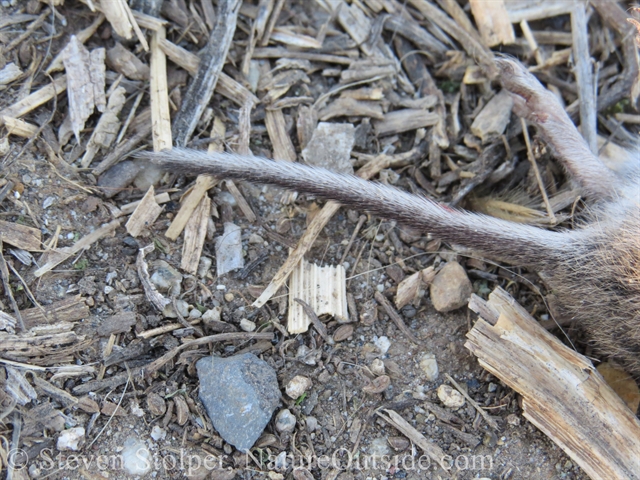
The California meadow vole’s short, bi-colored tail is a key identifying feature.
It’s not surprising to find voles feeding on the plentiful grasses. And it also explains how this small area can support so many raptors. Voles are prolific breeders, and on the menu of hawks, owls, coyotes, skunks, and snakes.
What’s Up Doc?
But there’s more stirring than just voles. Rabbit sign is everywhere. But you won’t see it standing up. Our heads are held five or six feet in the air. We need to lower our eyes to about knee-level to find important sign.
There are bite marks on many of the plant stalks that bear the unmistakable sign of rabbit. Rabbits leave 45-degree chiseled cuts. In fact, many rodents leave such marks. But I know these are rabbit because of the height of the cut above the ground. Others in our group confirm that they’ve seen rabbits eat this species of plant.
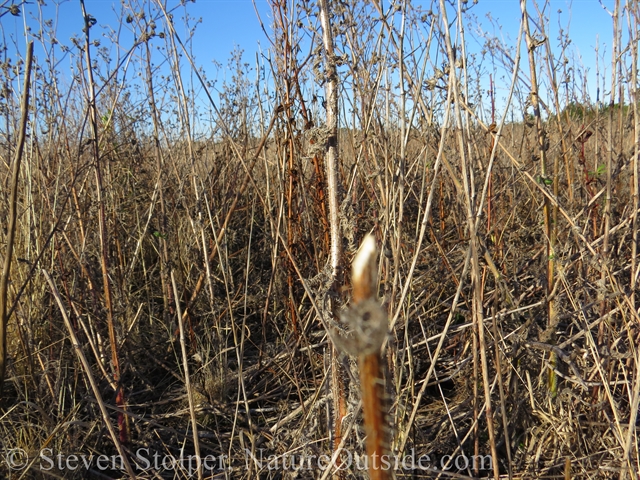
These cut stalks immediately grab our attention.
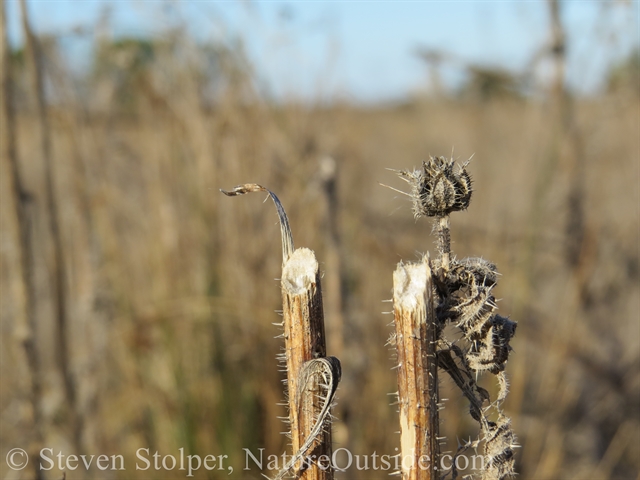
A closer look reveals clear feeding sign.
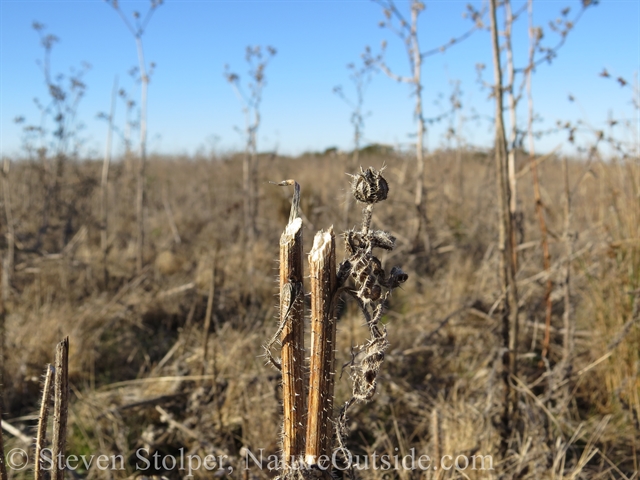
The height above the ground, angle of the cut, and type of plant all point to rabbit.
What type of rabbit could have made these marks? Each species of rabbit has ears and limbs adapted to its habitat. In this area we have Black-tailed jackrabbit (Lepus californicus) and Audubon’s cottontail (Sylvilagus audubonii). The larger jackrabbit lives in the open. So it has long ears to detect threats and long limbs to escape predators. The smaller cottontail relies on cover. It has short ears and limbs for better concealment.
The cuts are six to eight inches above the ground. So, it could be either species. But a closer look reveals scat.
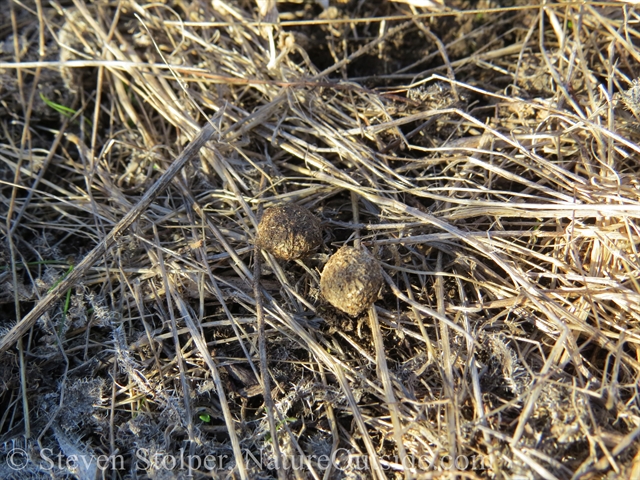
Rabbit scat is round and filled with plant material
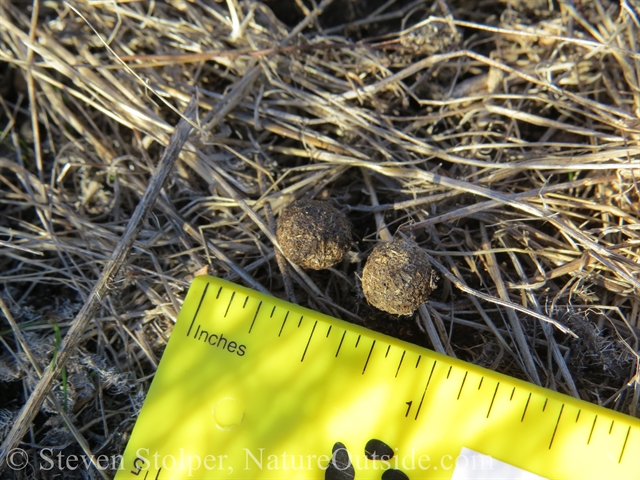
The scat measures about one quarter of an inch in diameter, which points to cottontail.
The scat was about a quarter-inch. This falls right in the sweet spot for the cottontail. Jackrabbit scat is visibly larger.
The Owl Bush
We approach some Coyote brush and make an exciting find – owl pellets lying in the grass underneath. Evidently, the local raptors have been quite busy. And the pellets are loaded with intact bones. I can make out a complete tail and a hand!
They measure roughly one to two inches. Their width corresponds to the diameter of the animal’s esophagus. From their size, we conclude the pellets were regurgitated by a Barn owl (Tyto alba).
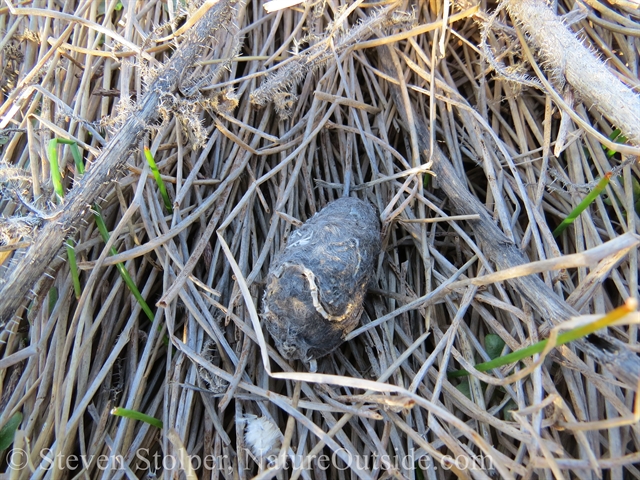
Owl pellet lying on the grass beneath a Coyote brush.
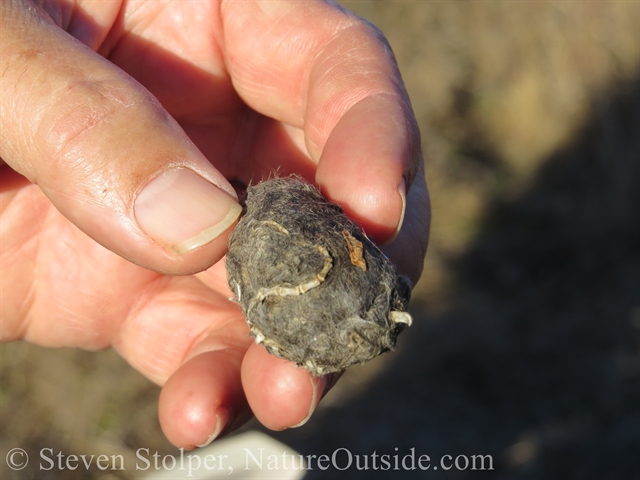
There is a complete skeleton of a tail within the pellet.
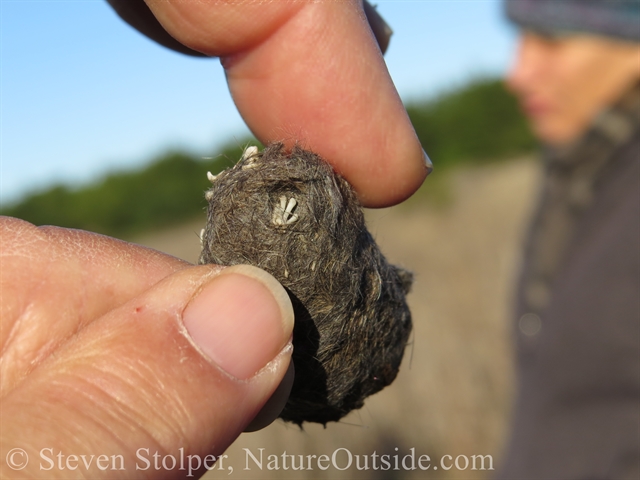
The same pellet contains the skeleton of a small hand.
But then things get weird. We amble over to a dead Coyote brush and make a grizzly discovery. Its lower branches are draped with guts and internal organs. It looks like an unholy Christmas tree! Raptors have consumed their kills perched on the upper branches. I see stomachs, intestines, and other unpalatable bits and pieces.
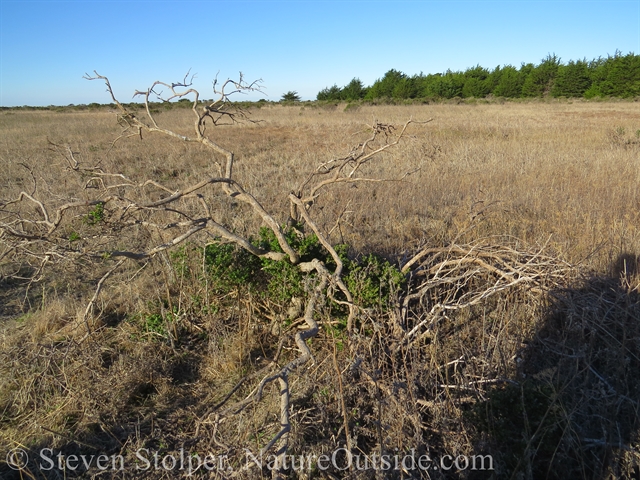
Animal guts draped on Coyote brush.
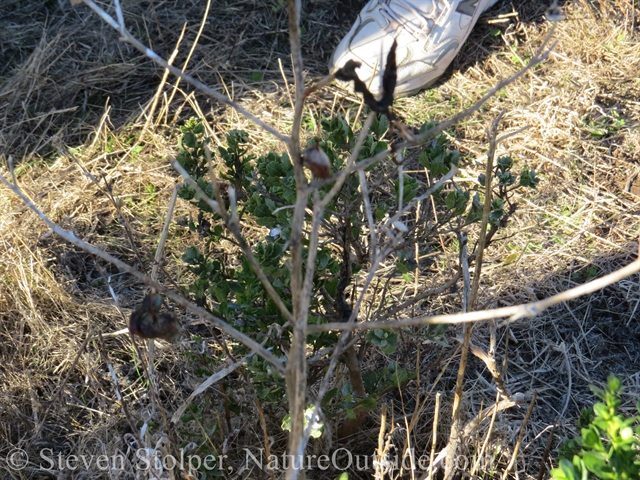
Dried animal guts hanging from branches underneath the larger bush.
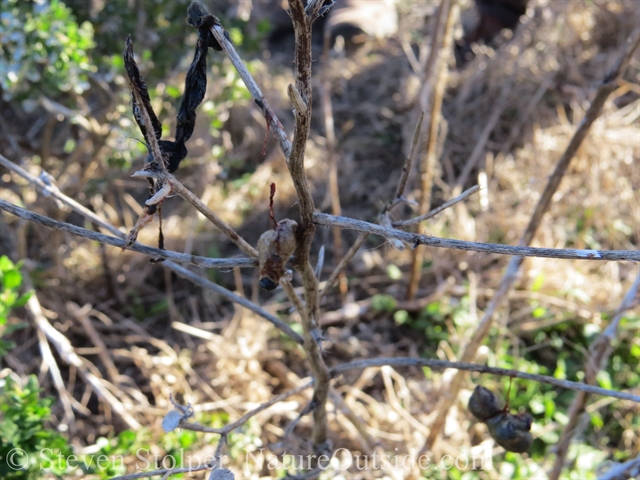
Dried animal guts on branches.
There’s a lot of hunting going on in this small patch of grassland.
An Unexplained Demise
Although it is daylight, I keep my head on a swivel looking for the barn owl. I know it sounds silly, but I want to see it so badly!
My wishes are granted. But not in the way I expect.
We find a beautiful Barn owl feather laying on the ground. The distinctive coloring and enormous size makes it instantly recognizable.
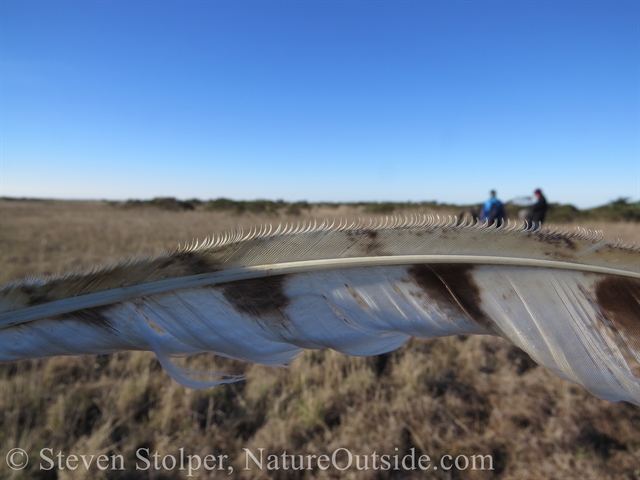
Barn owl feather
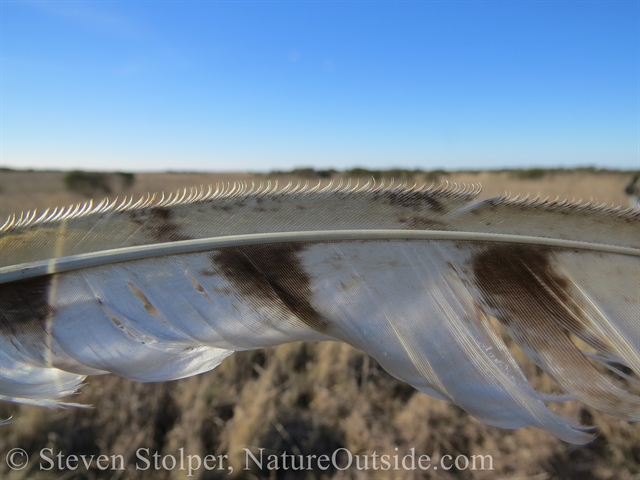
Notice the fringe on the leading edge – this is stealth technology!
Owls have “fringes” on the leading edge of their primary flight feathers. The fringes are an amazing stealth technology. Normally during flight, air moving across the surface of a bird’s wings generates turbulence. The turbulence produces the whooshing or flopping sounds we hear when a bird flies by us.
The fringes on the leading edge of their wings channel the airflow to break up the turbulence. Fringes on the trailing edge of the feather do the same. The feathers also absorb some of the high frequency sound to which prey animals (and humans) are attuned. This streamlined airflow enables owls to glide silently through the night.
But within a few yards, my heart drops into the pit of my stomach. We find pieces torn from a Barn Owl’s wing. Further on, we find the owl’s remains.
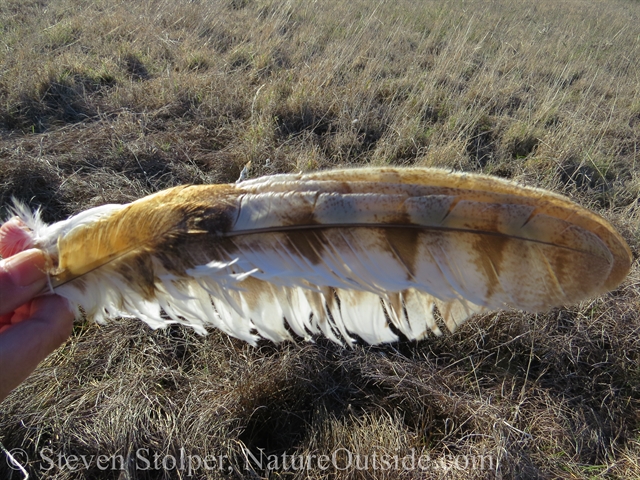
Barn owl wing.
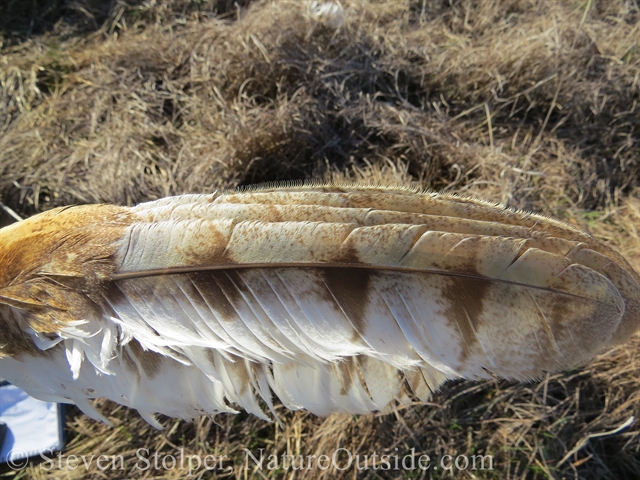
Barn owl wing. Even in death it is beautiful. Notice the fringe on the leading edge of the feathers.
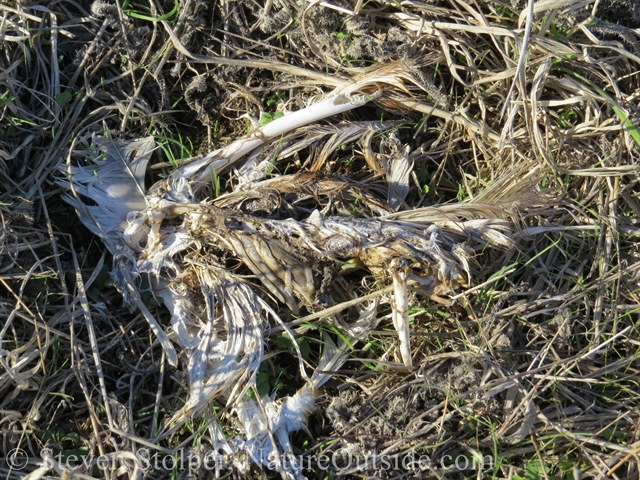
The Barn owl’s remains.
The corpse is too old for us to determine what killed it. The body had been well scavenged. Several trackers tell stories of owls they saw just keel over and die as a result of built up toxicity. After consuming rodents that had been poisoned by farmers, the owls suddenly become sick or die. It is unclear what killed this one.
Time to Bone Up on Your Skulls
We leave the owl behind and scout towards the cypress forest. It’s our ultimate destination and harbors an amazing surprise!
Stay tuned for Part 2. We reach the cypress forest and make an amazing discovery.
Hike to Skeleton Grove (Part 2)
References
The following are affiliate links.
Mammals of California, E. W. Jameson, Hans J. Peeters
Mammals of the Pacific States, Lloyd G. Ingles
Bird Feathers: A Guide to North American Species, S. David Scott, Casey McFarland
Animal tracks and scat of California, Mark Elbroch, Michael Raymond Kresky, Jonah Wy Evans
Related Articles on NatureOutside
For fun facts and useful tips, join the free Bushcraft Newsletter.



Leave a Comment